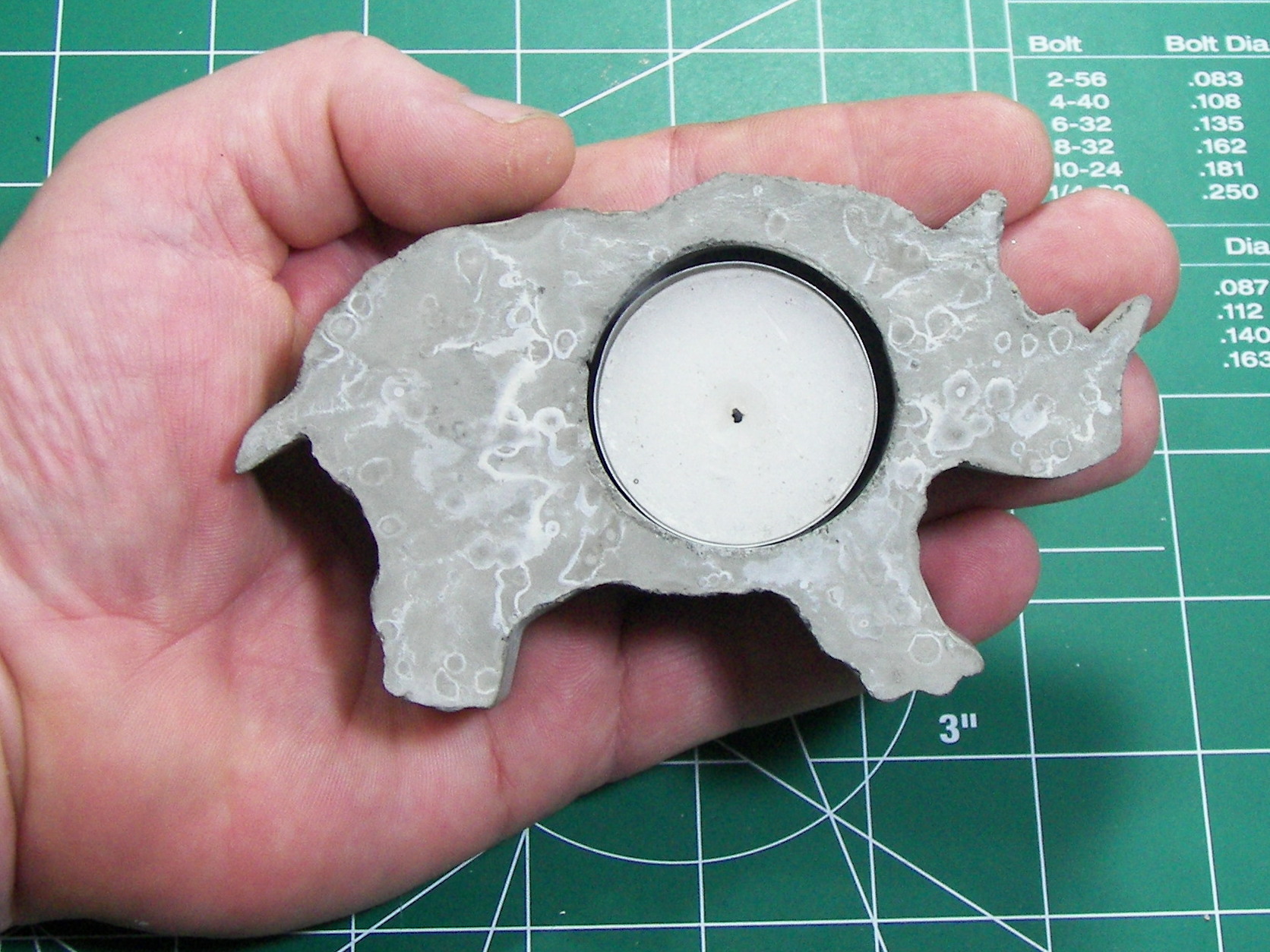I’ve been wanting to try out some new ideas for simpler projects that can be done over a weekend, kind of a rainy-day thing for parents with kids or just some friends hanging out together. This is my first attempt at it.
I’ve been playing around with concrete candle holders for a bit now but found myself limited to easy-to-make outline shapes. Then I remembered all the crazy different cookie cutters my housemate has in her baking closet. I found that some of them have very interesting shapes indeed and went out and got a few on my own on Amazon and eBay and the local gourmet cooking store. They work surprisingly well for concrete work and here’s a simple way to use them at home.
This project uses anchoring cement as the concrete element. This cement is great for smaller projects like this, as it cures quickly (overnight to be safe) and can be mixed with water to the point where it is pourable.
For most small-scale concrete work the water to dry-mix ratio is extremely important and having too much or too little can mess up everything. For my concrete lightbulbs I measure it out to the gram and even then there are variations per batch. Anchoring cement is far more forgiving and allows you to use kitchen measuring cups and spoons and semi-close is good enough. Having pourable cement means that it will fill your mold completely.
For more of my concrete and other crafty work, check out my stuff here.


